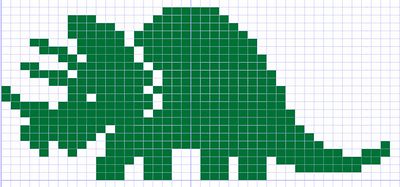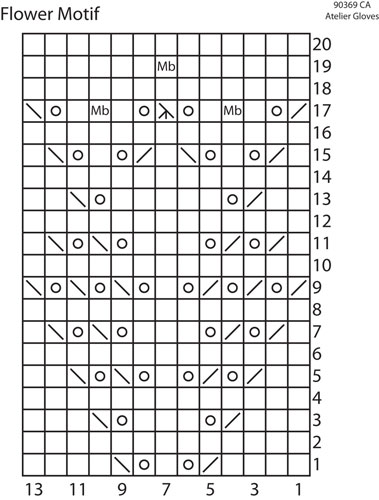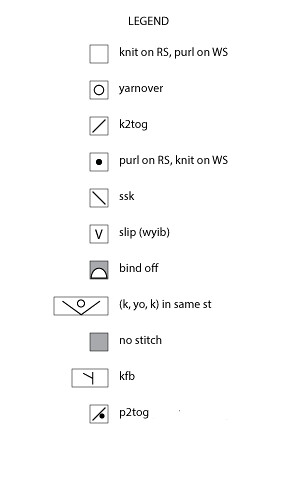OK. So. Charts. You might like them, you might hate them, you might be downright terrified of them. Me, I love them. In fact, you have asked me for pattern advice, or taken a lesson with me, I may have waxed downright poetic about them (um, sorry? Actually, no, definitely not sorry). In short, I think that being comfortable with reading and working from charts will greatly speed up a new knitter’s ability to ‘read’ their knitting, and is a far more elegant and effective method of following and writing patterns than line-by-line written directions (in general – there are always exceptions). Since it’s been a while since I offered an introduction to charts class, I’m going to give a very brief rundown today – if you’re interested in learning more, you know where to come!
First, this is a chart.
And so is this.
Charts can be used for colourwork, lace, cables, even knit and purl patterns (and presumably any other types of patterns I have overlooked).
When it comes to reading charts, it varies between working flat and working in the round. When working flat, the right side rows will be read from right to left, and the wrong side rows will be read from left to right, and should be numbered appropriately. (Please note, that as in all things, not every design or pattern is created equal – I am generally referring to best practices, you will of course come across some that are… not as clear)
And for charts worked in the round, each row is read from right to left, and again, should be numbered properly.
Now, there is all sorts of other notation on these charts. Some include indications about where to repeat motifs (usually lines in bold outlining part of the chart), some include stitch counts (usually along the bottom), but all well-designed charts should, without exception, include a legend.
Now, here’s the thing that does irk me about charts. There is an almost worrying lack of consistency and standardization amongst designers as to what each symbol represents. That is why legends are essential. Most designers or design houses do have a reasonable degree of internal consistency, but without exception, you should always, ALWAYS read the legend.
Want to learn what some of the symbols mean and how to get the most out of charts? Well… sorry, but you’re going to have to take my class! Or at least just get yourself a pattern and dive in – there’s really nothing to be afraid of!




